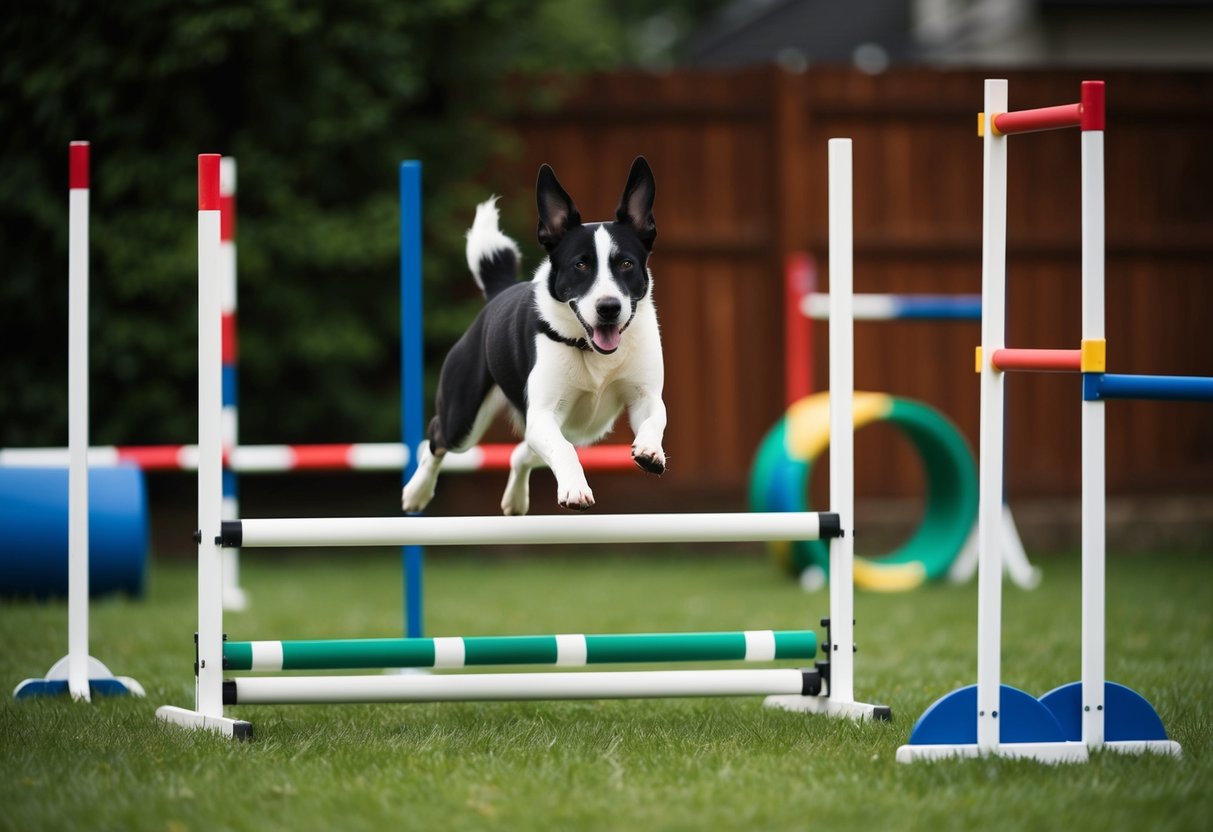
Ensuring a Safe Environment for Training
Choosing the right location for the agility course contributes significantly to safety. The area should be free from obstacles such as rocks or debris that can cause injury. A flat, even surface is essential to prevent tripping or stumbling, giving the dog optimal conditions for practicing agility skills.
Checking the weather is also a consideration. Wet, slippery surfaces can be dangerous, so choosing appropriate times for training is important. Monitoring your dog’s health during practice sessions is equally crucial, ensuring they’re not overexerted and have access to water. With vigilance, the training environment can remain a safe and enjoyable space for your dog to thrive.
Essential Agility Obstacles to Include
Designing a DIY agility course for your dog involves including crucial obstacles such as jumps, weave poles, tunnels, and contact equipment. These elements not only enhance physical fitness but also sharpen a dog’s focus and responsiveness.
Jumps: From Simple Bars to Tire Jumps
Jumps form the backbone of any agility course. They can range from basic jump bars set at various heights to more complex tire jumps.
A simple jump bar requires two upright poles with a crossbar adjustable for different skill levels. They test a dog’s ability to leap with precision. A tire jump, often a circle held in a frame, adds a fun twist, challenging dogs to fly through the center. Ensuring that these jumps are stable and safe is paramount, as they push your dog to develop agility and coordination.
Including multiple jumps spaced strategically can increase the challenge, making the course more engaging. Proper space between jumps allows dogs to gain momentum, enhancing their overall performance.
Introducing Weave Poles and Tunnels
Weave poles are an excellent way to improve a dog’s focus and flexibility. Typically made up of a series of upright poles, the dog must weave in and out with speed and accuracy. Proper spacing and uniform height are significant, ensuring even flow throughout the course.
Tunnels offer a contrasting experience, where dogs navigate through a fabric chute. This obstacle encourages confidence, as dogs can sprint through the curved or straight structure. Incorporating tunnels made from sturdy materials ensures durability and safety.
Both weave poles and tunnels require training and can be introduced initially with guides or lures to help dogs understand the task. Gradually increasing difficulty by removing aids ensures that your dog gains expertise and confidence.
Incorporating Contact Obstacles: A-Frame, Dog Walk, and Seesaw
Contact obstacles, such as the A-frame, dog walk, and seesaw, help enhance a dog’s balance and control. The A-frame is two planks joined at the top, requiring the dog to climb and descend. It’s essential for dogs to learn to make contact with the designated zones to complete the task successfully.
The dog walk, featuring a narrow walkway with ramps on either side, challenges a dog’s balance and gait. Training a dog to navigate this at different speeds increases their skill level.
The seesaw, a plank mounted on a pivot, adds a dynamic element, requiring the dog to balance as it tips. Mastery of these contact obstacles necessitates gradual introduction and practice to ensure safety and prevent hesitancy.
Utilizing the Pause Table
The pause table is a unique element where dogs must stop and remain in a designated position, usually sit or down, for a set period. This tests obedience amidst high-energy activity.
Creating a stable, uniform platform is necessary. Training should focus on developing patience and focus, crucial for a dog’s overall control.
This obstacle is pivotal in teaching dogs the importance of listening to commands, even during engaging courses. Incorporating a pause table in your agility course significantly enhances a dog’s discipline and responsiveness. Regular practice and positive reinforcement ensure that dogs execute the pause command whenever necessary.



